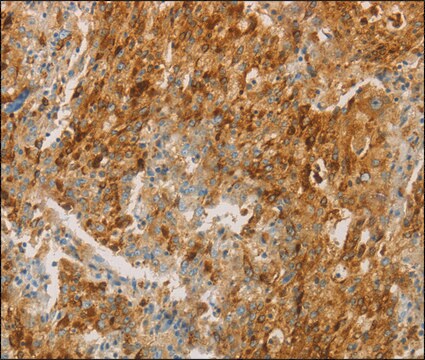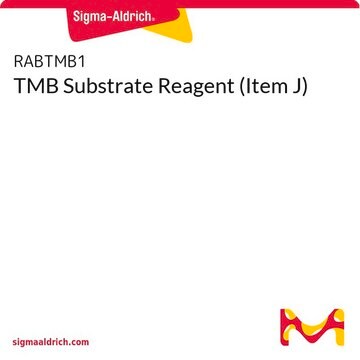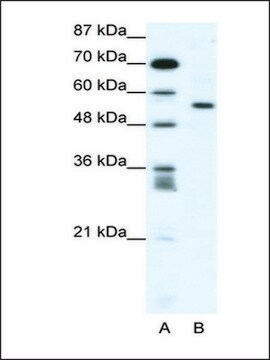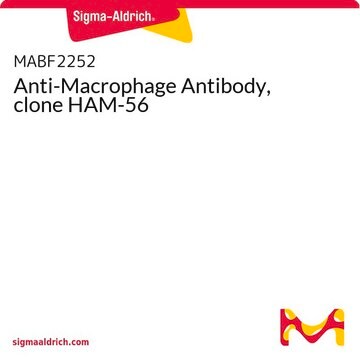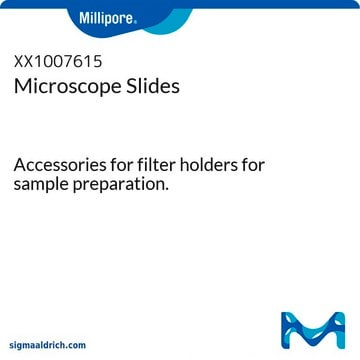MAB1407P
Anti-Macrophages/Granulocytes Antibody, clone OX-41
clone OX-41, Chemicon®, from mouse
Sinonimo/i:
CD172 antigen-like family member A, CD172a antigen, Inhibitory receptor SHPS-1, Macrophage fusion receptor, MyD-1 antigen, SHP substrate 1, SHP substrate-1, Signal-regulatory protein alpha-1, signal-regulatory protein alpha
About This Item
Prodotti consigliati
Origine biologica
mouse
Livello qualitativo
Forma dell’anticorpo
affinity isolated antibody
Tipo di anticorpo
primary antibodies
Clone
OX-41, monoclonal
Purificato mediante
affinity chromatography
Reattività contro le specie
mouse, human, rat
Produttore/marchio commerciale
Chemicon®
tecniche
flow cytometry: suitable
immunocytochemistry: suitable
immunohistochemistry (formalin-fixed, paraffin-embedded sections): suitable
western blot: suitable
Isotipo
IgG2a
N° accesso NCBI
N° accesso UniProt
Condizioni di spedizione
wet ice
modifica post-traduzionali bersaglio
unmodified
Informazioni sul gene
human ... SIRPA(140885)
Categorie correlate
Descrizione generale
Specificità
Labels most macrophages including resident peritoneal, alveolar and activated macrophages. Recognition of other macrophages is limited to only occasional kupffer cells. In addition it labels granulocytes and a population of dendritic cells. It also labels brain extensively.
Immunogeno
Applicazioni
Frozen sections and Formalin fixed, paraffin embedded tissue sections (requires trypsin or pronase pre-treatment).
Western Blotting:
A previous lot of this antibody was used in western blot.
Flow cytometry:
1:100-1:200 of a previous lot was used. (Use 10 μL of working dilution for 10^6 cells in 100 μL).
Optimal working dilutions must be determined by the end user.
Inflammation & Immunology
Inflammation & Autoimmune Mechanisms
Qualità
Immunocytochemistry Analysis:
Confolcal fluorescent analysis of Macrophages/ Granulocytes using anti-Macrophages/ Granulocytes mouse monoclonal antibody.
Descrizione del bersaglio
Linkage
Stato fisico
Stoccaggio e stabilità
Risultati analitici
Macrophages, monocytes, lymphoid organs.
Altre note
Note legali
Esclusione di responsabilità
Not finding the right product?
Try our Motore di ricerca dei prodotti.
Codice della classe di stoccaggio
12 - Non Combustible Liquids
Classe di pericolosità dell'acqua (WGK)
WGK 2
Punto d’infiammabilità (°F)
Not applicable
Punto d’infiammabilità (°C)
Not applicable
Certificati d'analisi (COA)
Cerca il Certificati d'analisi (COA) digitando il numero di lotto/batch corrispondente. I numeri di lotto o di batch sono stampati sull'etichetta dei prodotti dopo la parola ‘Lotto’ o ‘Batch’.
Possiedi già questo prodotto?
I documenti relativi ai prodotti acquistati recentemente sono disponibili nell’Archivio dei documenti.
Il team dei nostri ricercatori vanta grande esperienza in tutte le aree della ricerca quali Life Science, scienza dei materiali, sintesi chimica, cromatografia, discipline analitiche, ecc..
Contatta l'Assistenza Tecnica.